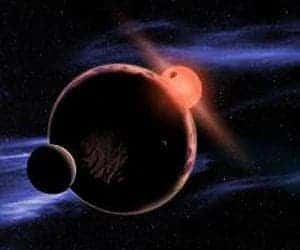After researchers surveyed data from the Kepler mission tasked with identifying possibly habitable planets outside our solar system they found that 6% of red dwarfs – the most common type of planets – are within this zone. This new adjustment would mean that the nearest Earth-like planet might lie just 13 light years away.

Astronomers at the Harvard-Smithsonian Center for Astrophysics (CfA) first took a look at the entire Kepler catalog of 158,000 target stars to identify all the red dwarfs. Then a more refined method was used to assess the stars’ temperature and size, an analysis that showed that these were generally smaller and cooler than previously thought.
An exoplanet is discovered and has its properties determined based on its transient orbit in plane with its parent star. This implies that the exoplanet’s size and properties are the same time determined based on its host star, since they’re based relative to the star’s properties. Thus, cooler dwarf stars means cooler planets and a tighter habitable zone.
“We thought we would have to search vast distances to find an Earth-like planet. Now we realize another Earth is probably in our own backyard, waiting to be spotted,” said Harvard astronomer and lead author Courtney Dressing (CfA).
A new Earth might be closer to us than thought
Red dwarfs make up three out of every four stars in our galaxy for a total of at least 75 billion. The astronomers involved in the present study identified 95 planetary candidates orbiting such red dwarf stars. Upon closer inspection most of them didn’t fit the right size and temperature requirements needed for them to be considered Earth-like, though. Three candidate planets, however, were considered both warm and Earth-sized. This would statistically imply that some 6% of all red dwarfs should have an Earth-like planet orbiting.
“We now know the rate of occurrence of habitable planets around the most common stars in our galaxy,” said co-author David Charbonneau (CfA). “That rate implies that it will be significantly easier to search for life beyond the solar system than we previously thought.”
It so has it that our solar system is located in a cloud of red dwarfs, which is why more than 75% of all neighboring stars are red dwarfs. With this new analysis in play, this all adds up implying that the nearest Earth-like planet might lie just 13 light years away.
Actually locating an Earth-like planet, with all its perks, would require an analysis of its atmosphere, something not possible with today’s technology. Once with the deployment of massive space telescopes like the James Webb Space Telescope or ground based telescope arrays like the Giant Magellan Telescope probing a distant world’s chemistry will be possible – expect some of humanity’s greatest discoveries to be made once this happens.
The three habitable-zone planetary candidates identified in this study are Kepler Object of Interest (KOI) 1422.02, which is 90 percent the size of Earth in a 20-day orbit; KOI 2626.01, 1.4 times the size of Earth in a 38-day orbit; and KOI 854.01, 1.7 times the size of Earth in a 56-day orbit. All three are located about 300 to 600 light-years away and orbit stars with temperatures between 5,700 and 5,900 degrees Fahrenheit. (For comparison, our Sun’s surface is 10,000 degrees F.)
Dressing presented her findings today in a press conference at the Harvard-Smithsonian Center for Astrophysics in Cambridge, Mass.
source: press release



